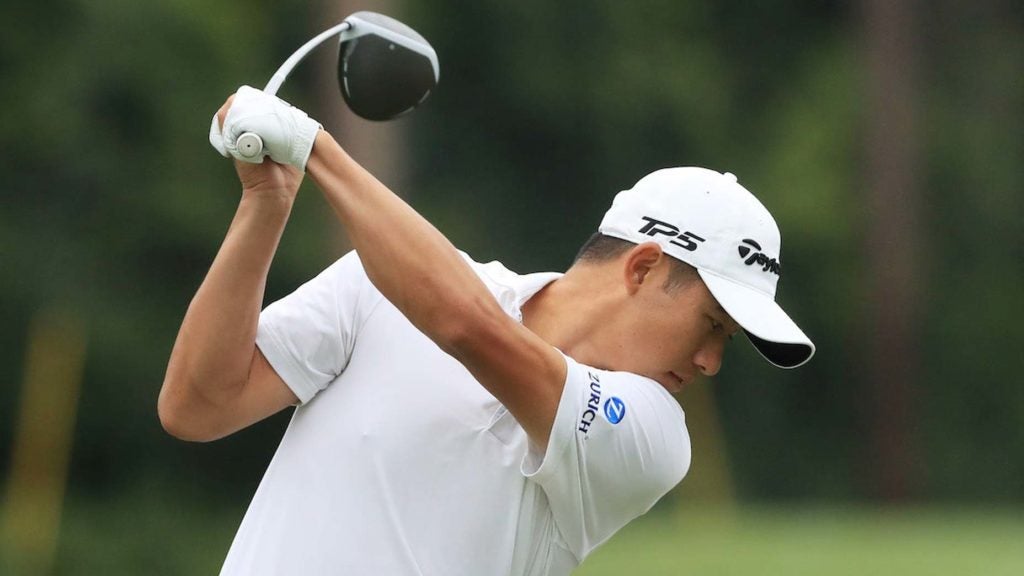Collin Morikawa collected the PGA Championship on Sunday — his first major that almost certainly won’t be his last. His performance from tee-to-green was superb, one that a PGA Tour veteran would be proud of, let alone a 23 year-old with just 27 pro starts under his belt.
Indeed, for all the quality throughout his game, it’s Morikawa’s ball-striking that is his true strength. He came into the event ranked second in SG: Approach on Tour, and led the PGA field in fairways and proximity to the hole.
Morikawa swing is the epitome of a modern, athletic move, one that a host of great coaches use as a model for their students. So when you’re wondering what the hype is about, and what you can learn from it, here’s a brief explanation:
Lead Wrist Flexion
You may have heard the phrase “lead wrist flexion” at some point. If you’re interested, read GOLF Top 100 Teacher Dana Dahlquist article on the subject.
In a nutshell, when you lead wrist is “flexed” or “bowed”, it looks more like Dustin Johnson on the right below. If it’s “extended” or “cupped,” it’s more like Webb on the left. Rory is somewhere in-between.
There’s no one way to swing a golf club and, as you can see above, lots of pros make a lot of different things work for them. But coaches who teach students more towards Dustin Johnson’s position believe, in short, that a flexed lead wrist limits excess rotation of the clubface, which therefore stabilizes the clubface and helps your consistency.
Anyway, what does all this have to do with Morikawa? Because he’s become something of a poster boy for coaches who believe in the power of a flexed lead wrist. And his ball striking stats certainly make a compelling case.
As you can see, Morikawa’s lead wrist is slightly “flexed” or “bowed” at the top of his backswing …
… and creates even more flexion on the downswing.
Body Rotation
With his lead wrist flexed and the clubface stabilized, it prevents the need to flip or throw the clubface with his hands, which means there’s only one thing left to do: Rotate your body.
That’s not as easy as it sounds. The ability to rotate in your posture requires a high level of athleticism that many golfers simply don’t possess. Morikawa does, and he uses it to his advantage. As Chamblee notes, his arms stabilize the club and his body creates speed.
The beauty of the golf swing is that there’s no perfect way to do it. It’s about finding the best version of what you can do. Morikawa has found that for himself, and the results are already speaking for themselves.
